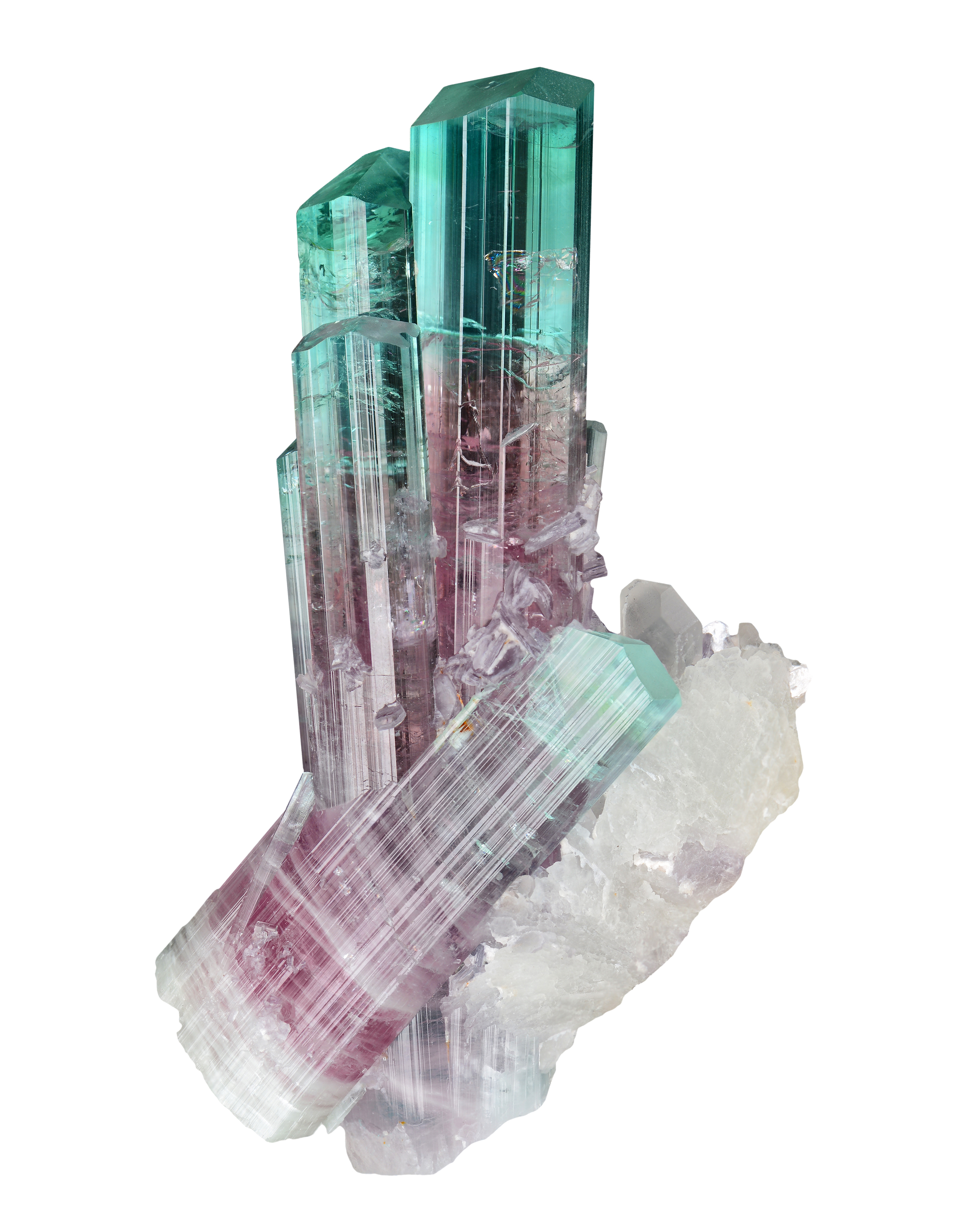Tourmaline << TUR muh lihn or TUR muh leen >> is any of a group of boron-containing minerals often found in granite. Tourmalines are used as gemstones and for industrial purposes.

Tourmalines have complex chemical compositions. All tourmalines contain boron, silicon, oxygen, and hydrogen. Varieties of tourmaline contain differing amounts of aluminum, calcium, fluorine, iron, magnesium, lithium, and sodium. Tourmalines form long, thin crystals with three, six, or nine sides.
Tourmalines vary greatly in color. The most common tourmalines include elbaite, dravite, and schorl. Elbaite, which is rich in lithium, can appear pink, blue, green, or yellow. Dravite, a magnesium-rich tourmaline, usually appears brownish. Schorl, rich in iron and manganese, is usually black. The color of some tourmaline crystals varies from the center to the edges. Watermelon tourmaline, for example, appears pink in the center and green at the edges. These changes indicate a change in conditions as the crystal formed.
Tourmaline makes up a minor part of granite and other igneous (volcanic) rocks. It also forms scattered grains in metamorphic rock formations. Traces of tourmaline are found in many sandstones. Large tourmalines often develop from boron-rich liquid left over when magma (melted rock) cools and begins to harden. Such cooling results in coarse-grained rocks called pegmatites that commonly contain clusters of large, radiating tourmaline crystals. Brazil is the world’s leading producer of tourmaline.
Tourmaline is piezoelectric—that is, its crystals can develop an electric charge when stretched or squeezed. Tourmaline has been used in radio transmitters and pressure sensors. Scientists use slices of tourmaline in the study of polarized light (light that vibrates in a single direction). Jewelers commonly cut transparent and flawless tourmaline crystals into gems. Tourmaline is one of the birthstones for October.
See also Gem; Polarized light.
